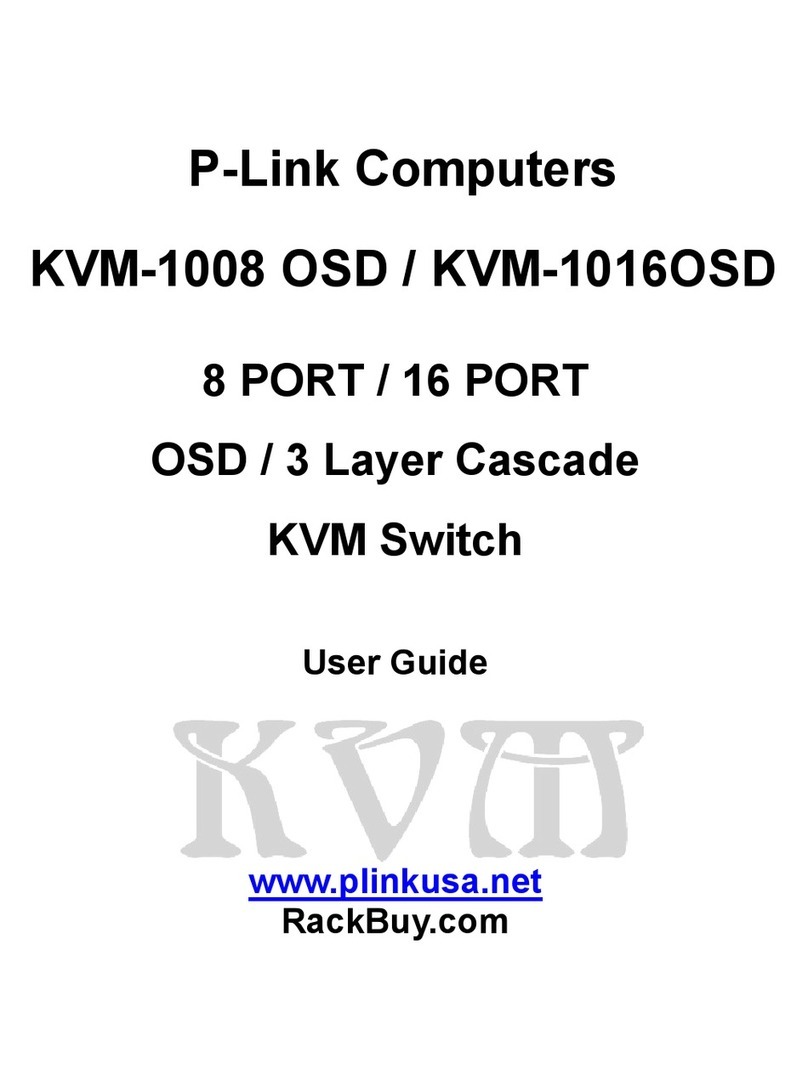
8/16-Port KVM over IP Switch
4 / 92
TABLE OF CONTENTS
1. The quick installation guide............................................................................................... 6
1.1 Package contents .................................................................................................... 6
1.2 Front/Rear Panels.................................................................................................... 6
1.3 Initial IP configuration .............................................................................................. 7
2. Introduction ..................................................................................................................... 12
2.1 Feature overview ................................................................................................... 12
2.2 Technical specifications ......................................................................................... 13
2.3 System requirement............................................................................................... 14
2.4 When the server is up and running........................................................................ 14
2.5 When the server is dead........................................................................................ 14
3. Hardware installation ...................................................................................................... 16
3.1 Operation Overview ............................................................................................... 16
3.2 Connecting PS/2 IP-KVM switch to the host system............................................. 16
4. Configuration................................................................................................................... 21
4.1 Initial Configuration ................................................................................................ 21
4.1.1 Initial configuration via serial console...........................................................23
4.2 Keyboard, Mouse and Video configuration ........................................................... 24
4.2.1 IP-KVM switch keyboard settings.................................................................24
4.2.2 Remote Mouse Settings ...............................................................................24
4.2.3 Automatic mouse speed and mouse synchronization..................................25
4.2.4 Host system mouse settings ........................................................................25
4.2.5 Single and Double Mouse Mode ..................................................................26
4.2.6 Recommended Mouse Settings ...................................................................26
4.2.7 Video Modes.................................................................................................26
5. Usage.............................................................................................................................. 27
5.1 Prerequisites .......................................................................................................... 27
5.2 Using PS/2 KVM over IP switch as a KVM switch................................................. 28
5.2.1 Daisy Chain Connection Diagram ................................................................30
5.2.2 Hot Plug........................................................................................................31
5.3 Login into the IP-KVM switch and logout............................................................... 34
5.3.1 Login into the IP-KVM switch .......................................................................34
5.3.2 Logout from the IP-KVM switch....................................................................36
5.4 The Remote Console............................................................................................. 36
5.5 Main Window ......................................................................................................... 37
5.5.1 Remote Console Control Bar .......................................................................37
5.5.2 Remote Console Status Line........................................................................45
6. Menu Options.................................................................................................................. 46
6.1 Remote Control...................................................................................................... 46
6.1.1 KVM Console................................................................................................46
6.1.2 Telnet Console..............................................................................................47
6.2 Romote Power Control .......................................................................................... 48




























